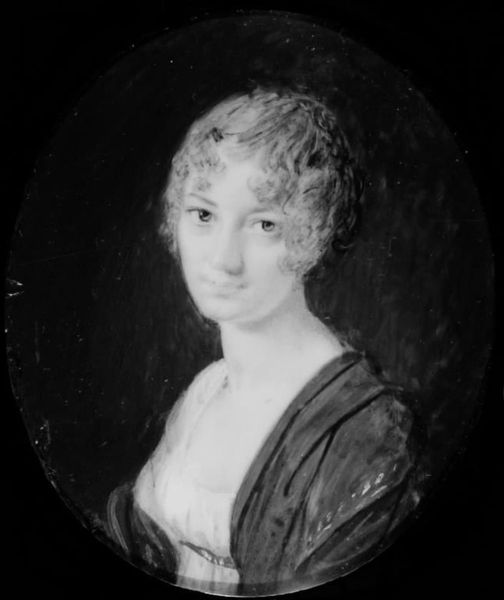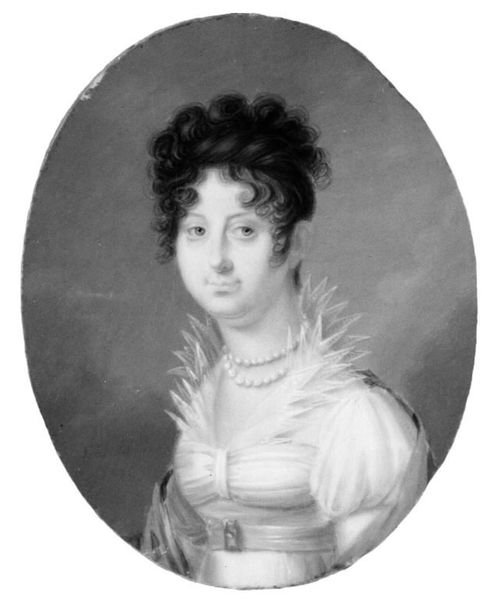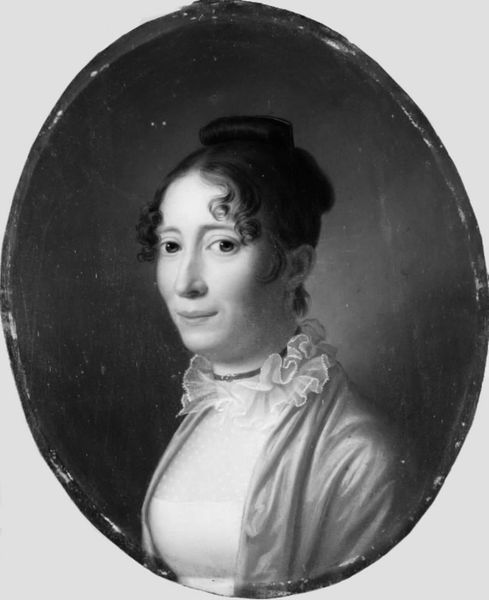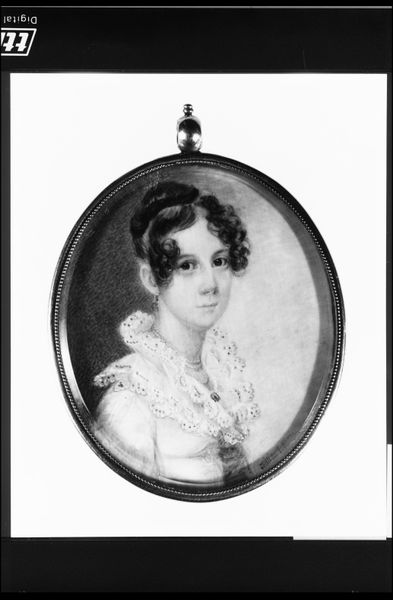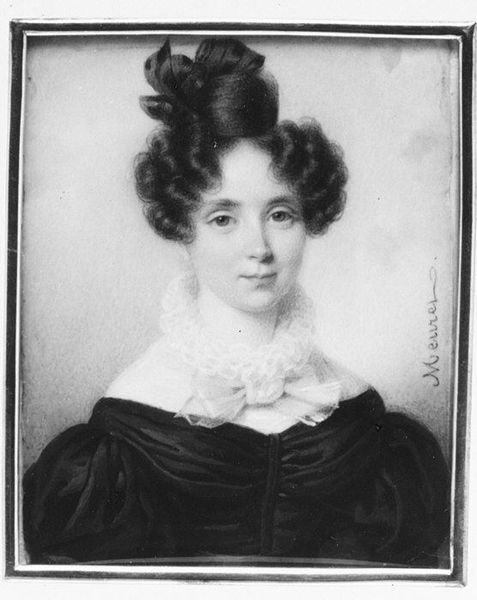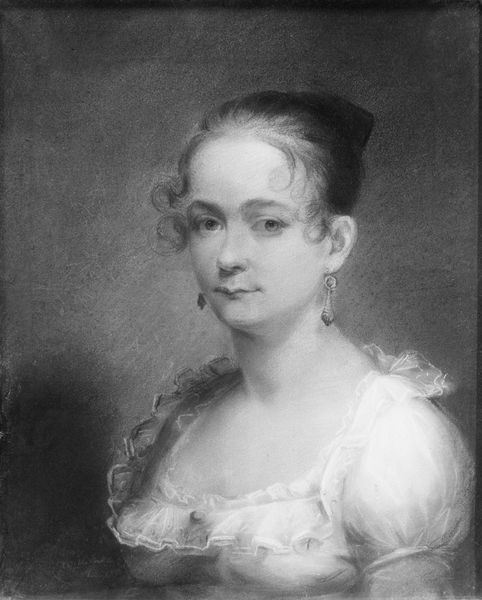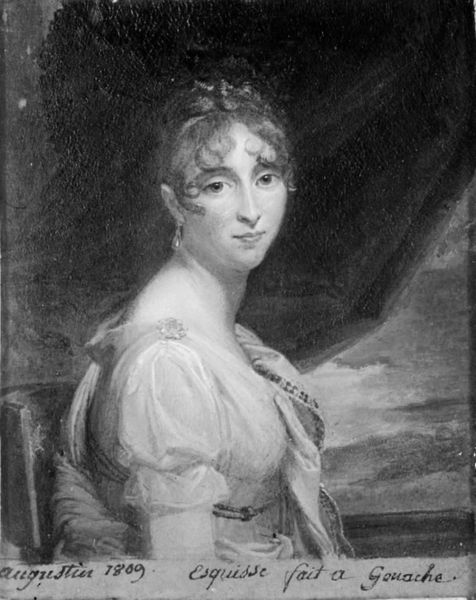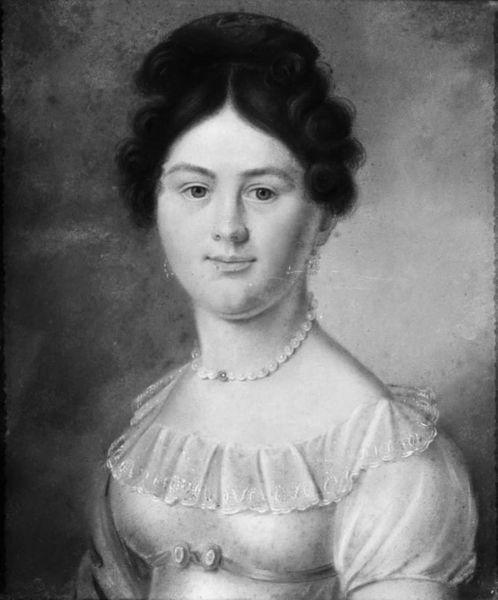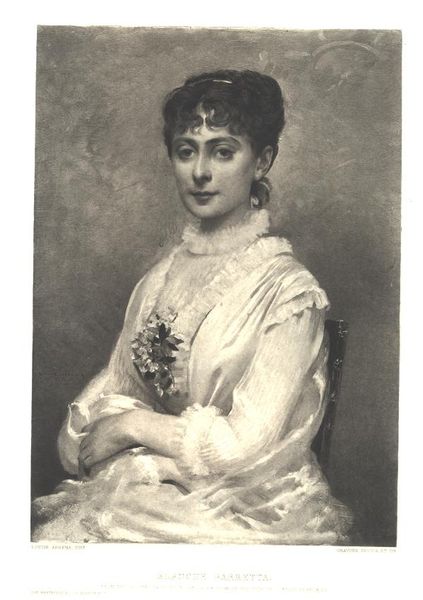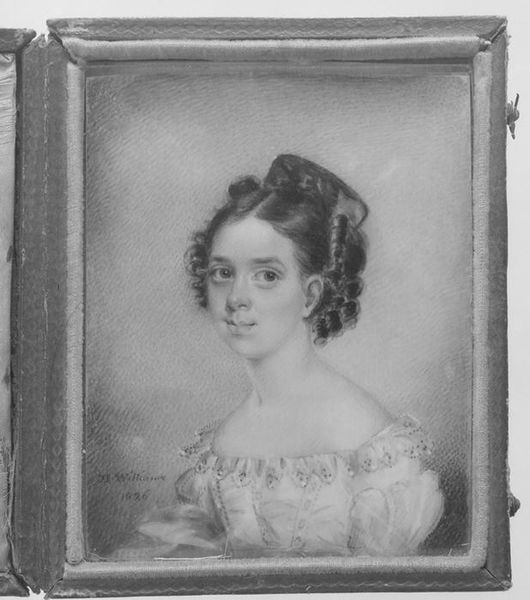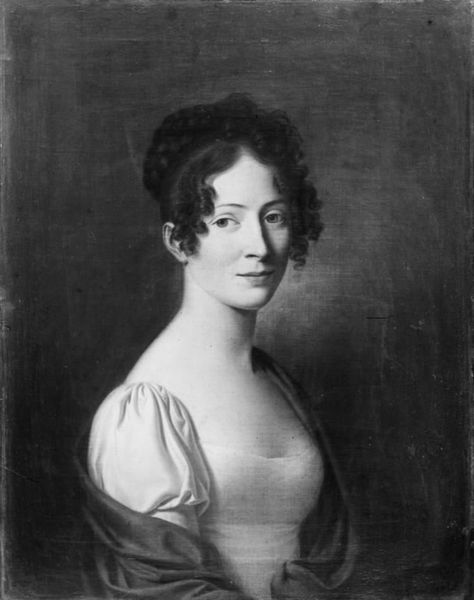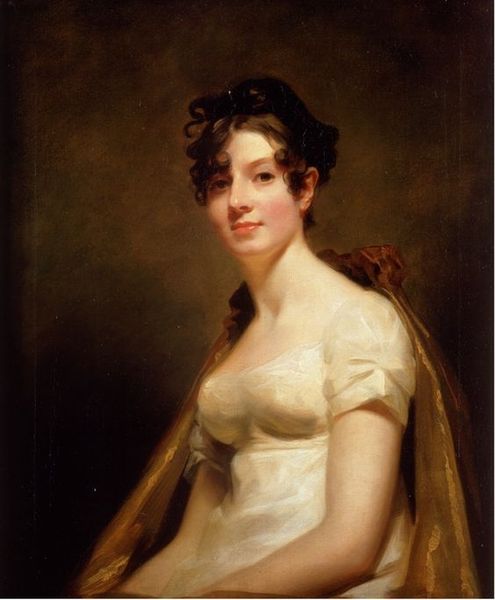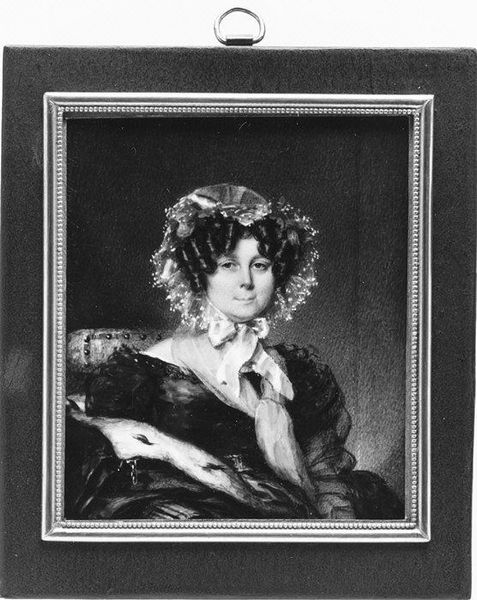
Portrait of Countess Johanne Caroline Wilhelmine Bille-Brahe, née Falbe 1816 - 1819
0:00
0:00
drawing, paper, pencil, chalk, graphite, ivory
#
portrait
#
drawing
#
portrait
#
figuration
#
paper
#
romanticism
#
black and white
#
pencil
#
chalk
#
graphite
#
ivory
Dimensions: 7.5 cm (height) x 6.4 cm (width) (Netto)
Curator: This is a portrait of Countess Johanne Caroline Wilhelmine Bille-Brahe, née Falbe. Christian Horneman rendered it sometime between 1816 and 1819. The piece incorporates chalk, graphite, and pencil on ivory. Editor: It’s remarkable. I'm immediately struck by the texture, the way the chalk and graphite capture the soft light on her skin and dress. There is a real elegance. Curator: Portraits like these were crucial in establishing social standing among the Danish elite. This miniature would have circulated within a specific social sphere, reinforcing the Countess’s identity and status within her community. Editor: I'm drawn to the composition. Horneman places the Countess in profile, which accentuates the delicate contours of her face and neck, leading the eye to that meticulously rendered hairstyle. The soft blending of tones gives the portrait a delicate, almost ethereal quality. Curator: Exactly. And think about the materials themselves. Ivory was highly prized. Using it, along with graphite, chalk, and pencil, reflects a desire for refinement, aligning with the Romantic era's fascination with capturing the individual essence of its subjects. Editor: I can appreciate that, but I am equally taken by the use of line and tone here. Look at the detailing around her lace shawl. The artist balances line against soft, subtle gradation to define the drape. Curator: It is interesting how such small-scale artworks reflect the socio-political trends, and personal styles of the period. This piece tells us about both Countess Bille-Brahe and the era in which she lived. Editor: Indeed. And it stands as a testament to the power of artistic technique, particularly that focus on subtle tonal gradation, to convey a sense of beauty and grace that transcends the boundaries of its time.
Comments
No comments
Be the first to comment and join the conversation on the ultimate creative platform.

